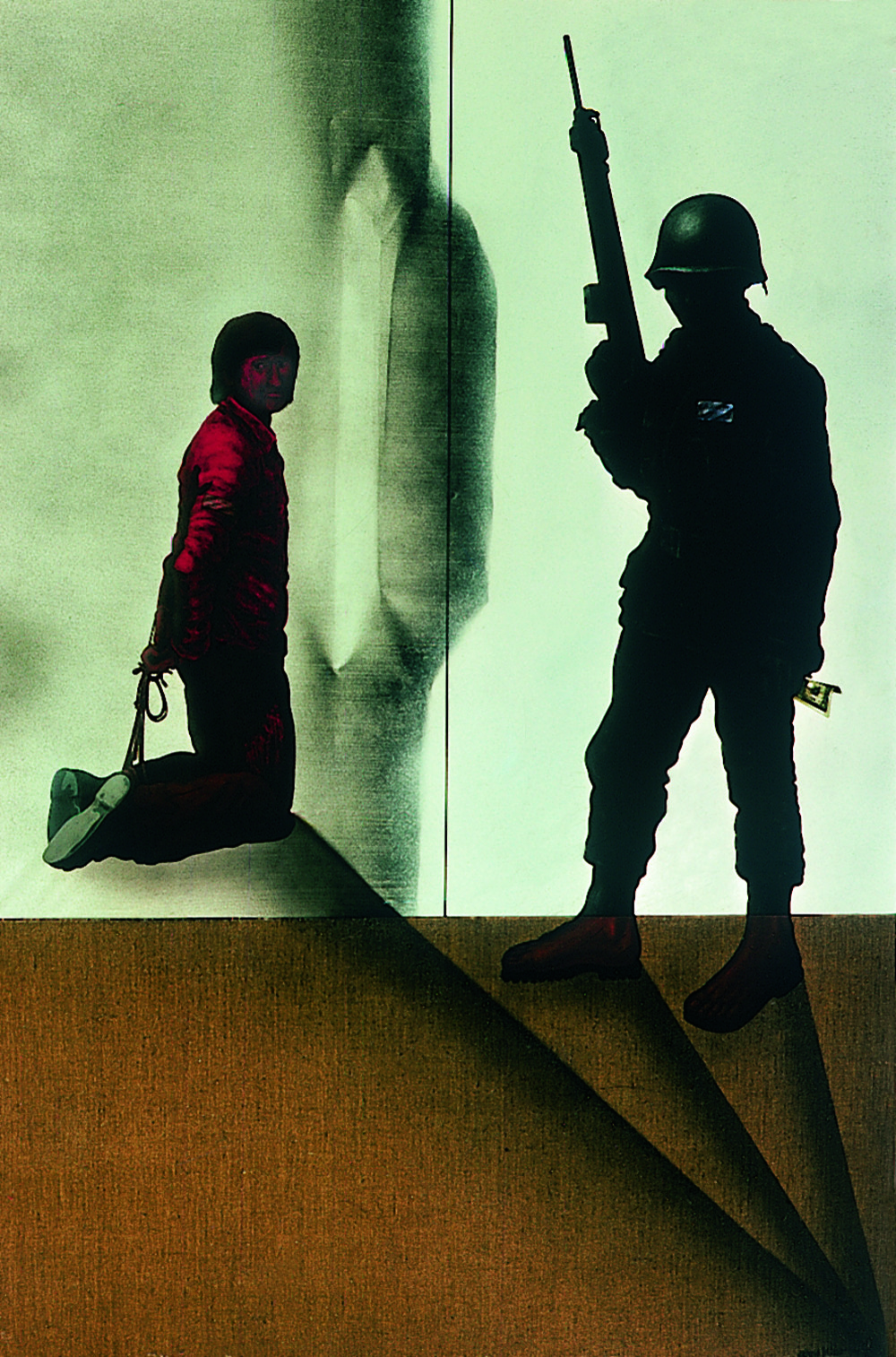La gran massacre subvencionada (The great subsidised massacre)
The “Chile” sub-series forms part of “The Dollar” series. Shortly after the 1973 military coup d’état overthrowing Chile’s government under President Allende, the artist began denouncing the involution that the take-over supposed for both Chile and Latin America as a whole. The critique of Capitalism and Imperialism, two subjects at which Miró has targeted his criticisms throughout his career, are conveyed through this historical event. In this case, the denunciation is highly specific given Miró’s participation in Gruppo Denunzia di Brescia.
The work alludes to the murder of many left-wing intellectuals during the shameful US-sponsored coup (America provided the funding). A pro-Allende prisoner is shown on his knees, his hands and feet bound just moments before his summary execution. On his sleeve is the famous phrase from Allende’s last radio speech, “They have the might but not the right”. He waits, looking at the beholder of the scene with serious countenance. In front of him is a wall whose white background hints at the nothingness that awaits the victim. The impression of a wall is achieved through shade gradients, with a pointed-out corner to suggest the boundary with the floor.
The soldier watching over the helpless prisoner, who will soon murder him, is wearing full battle gear, with a rifle and his helmet on. This overprotection, given the unequal struggle between the Army and civilians, highlights the appalling barbarity of the deed. Transparencies are deliberately used to show the bare feet within the soldier’s boots, hinting at the body that vanishes behind the uniform, in spite of the depersonalisation arising from the discretion of the upcoming event.
The prisoner and the executioner represent their respective groups. The whole is defined by a singular part in both cases. The soldier symbolically embodies the forces of domination as a whole: the Chilean Army under General Pinochet. The victim could easily be Victor Jara, a doctor, worker, or anyone else who happened to be a Marxist. The funder of the coup d’état is also explained by a synecdoche in which the US Dollar Bill coming out of the soldier’s pocket alludes to the connivance of the world’s mightiest Superpower.
The canvas is horizontally split into two parts: a lower part (covering roughly a third of the area) and an upper part (covering the rest of it). A vertical line splits the upper part into two equally-sized panes, one for each of the two figures portrayed.
The lower third of the painting simulates the floor plane on which the soldier is standing. The converging diagonal lines meeting in the bottom right-hand corner link the two figures and yield a certain depth of perspective.
The work uses a narrow range of colours: red, gray and brown. The red tints appear in the clothes of the man who is going to die and reflects the ideology of those singled out by the dictatorship. Black is used for the soldier, signifying the idea of death and repression that characterised the deeds of the Army. The brown used for the base lies within the chromatic range found in the Atacama Desert and may well refer to the land on which the events take place.
The post-coup d’état repression in Chile shocked Europeans in general and Spaniards in particular. Corredor-Matheos said at the time that he was not interested in “pure art that blithely ignored daily murder”. He asked his readers to “read the newspaper every day and to recall what lies ahead of us”.
Santiago Pastor Vila
